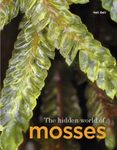![Common Mosses, Liverworts, and Lichens of Ohio Common Mosses, Liverworts, and Lichens of Ohio]()
Click to have a closer look
About this book
Customer reviews
Biography
Related titles
About this book
This engaging illustrated guidebook reveals the fascinating mosses and lichens that homeowners, outdoors people, and nature lovers encounter every day in Ohio and the Midwest.
In this guide to the most common and distinctive moss, liverwort, and lichen species in Ohio, readers will find concise physical descriptions, natural history and ecology facts, and tips to distinguish look-alike species, all presented in a friendly, conversational tone.
Featuring detailed photographs of the plant and plant-like species in their natural settings, Common Mosses, Liverworts, and Lichens of Ohio covers 114 mosses, twenty-one liverworts, and seventy lichens and offers several avenues to match a specimen to its description page. Each group includes "Where They Grow" chapters that spotlight the common species encountered on field outings, and simple guidance questions help readers quickly identify unfamiliar samples.
While designed primarily as an identification tool, this guide also frames moss and lichen spotting in a scientific context. The two main sections – bryophytes and lichens – detail their respective taxonomic kingdoms, explain their life cycles and means of reproduction and illustrate the variation in the traits used for identification. The book is an introduction to the biology of these intriguing but too-often-overlooked organisms and a means to enjoy, identify, and catalogue the biodiversity all around us.
Customer Reviews
Biography
Robert A. Klips is an associate professor emeritus in the Department of Evolution, Ecology, and Organismal Biology at Ohio State University, where he taught for over twenty years. Within the herbarium at OSU’s Museum of Biological Diversity, he currently oversees the curation of moss and lichen specimens. Skilled in botanical macrophotography, Klips served as the photographer for the Ohio Division of Wildlife’s 2017 Common Lichens of Ohio field guide and contributed images to dozens of books, periodicals, and websites. He frequently conducts fieldwork and educates nature study groups about the identification, ecology, and distribution of Ohio specimens.
Field / Identification Guide
By: Robert Klips(Author)
374 pages, 936 colour photos
"Dr. Klips has an uncanny talent for observation and an exceptional skill for distilling obscure characters into clear and memorable descriptions. Many of Klips's species descriptions contain wonderful humor and wordplay, but they are clearly written from a place of deep knowledge and extensive experience with these organisms."
– Eric J. Tepe, assistant professor and curator of the Margaret H. Fulford Herbarium at the University of Cincinnati
"Klips mastered an easy-to-understand guidebook, its clear and refreshing description encouraging the identification of common Ohio species with mainly the naked eye and a hand lens. The environment and the morphological characters of species are well illustrated and brought to life with drawings and photographs."
– Michaela Schmull, director of collections, Harvard University Herbaria & Libraries
"This book is a valuable addition to the library of every Ohio naturalist and is also very appropriate for those in surrounding states. The study of these usually neglected organisms necessarily requires some technical jargon but Klips's easy-to-read and frequently humorous writing style makes the process painless. While the book does not contain all the Ohio species of bryophytes and lichens, it covers the commonly seen ones with succinct descriptions and many facts not found in more technical manuals. The identification keys are easy to use and each species is represented by exceptional photographs, both on the macro and micro scale. I would recommend this book to anyone interested in nature and wanting to know more about the fascinating world of mosses and lichens."
– Ray E. Showman, coauthor of The Macrolichens of Ohio
"Common Mosses, Liverworts, and Lichens of Ohio is an instructional, informative, and cleverly written book. It has two chapters on how to use the book, along with photographs, illustrations, and identification keys. This book will appeal to all levels of investigators interested in the abundant cryptic dwellers of soil, rocks, and trees."
– Barbara K. Andreas, professor emerita, Kent State University



































